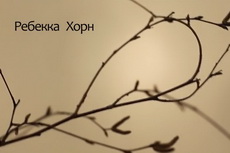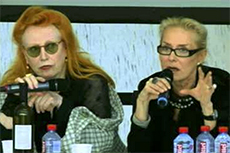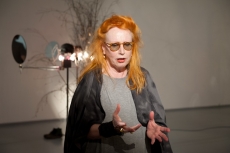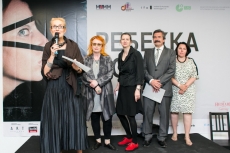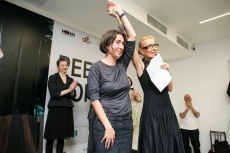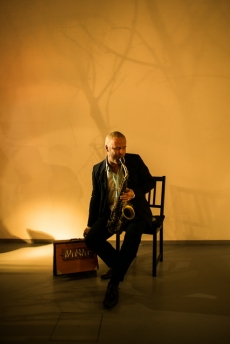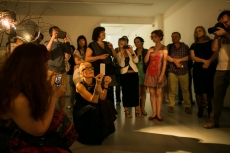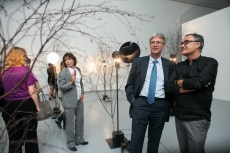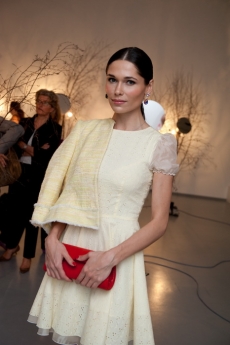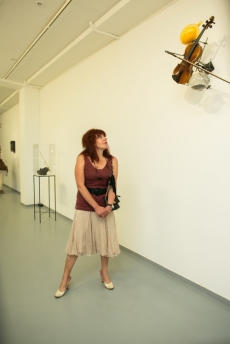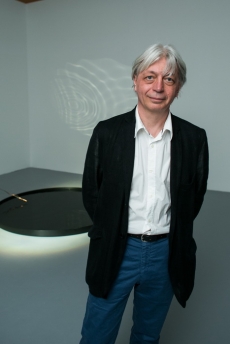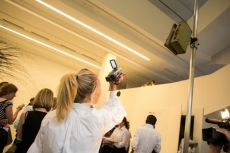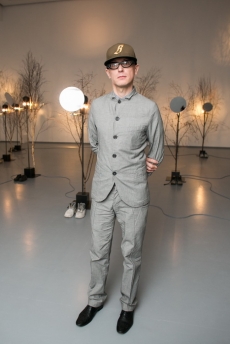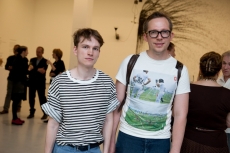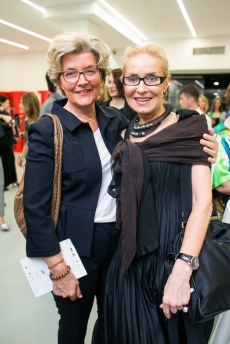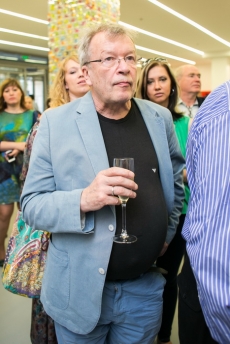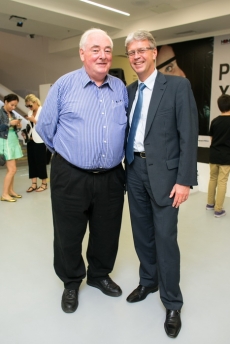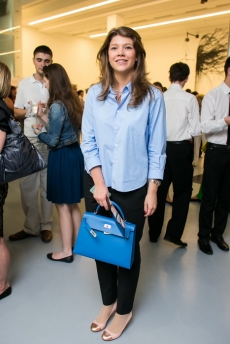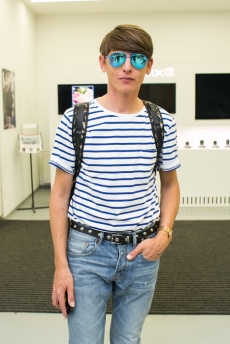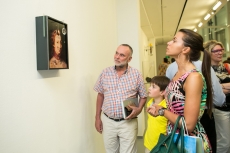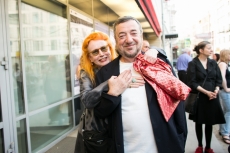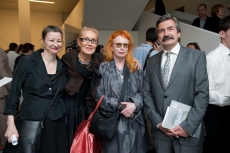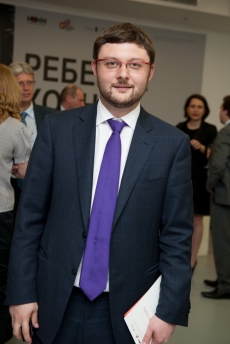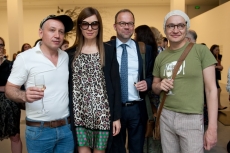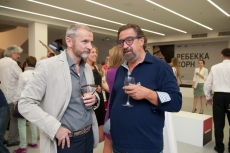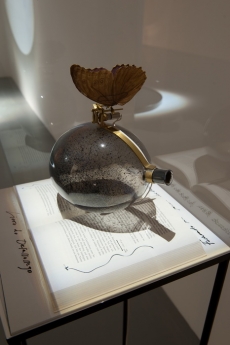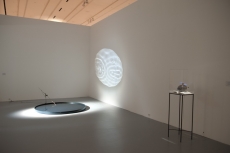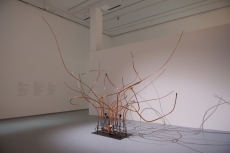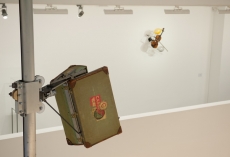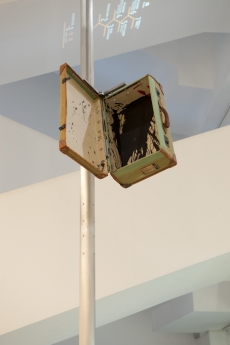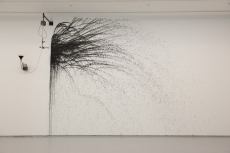Rebecca Horn
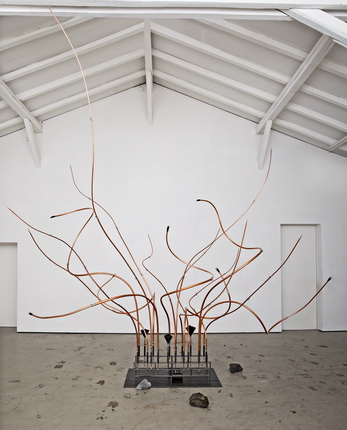
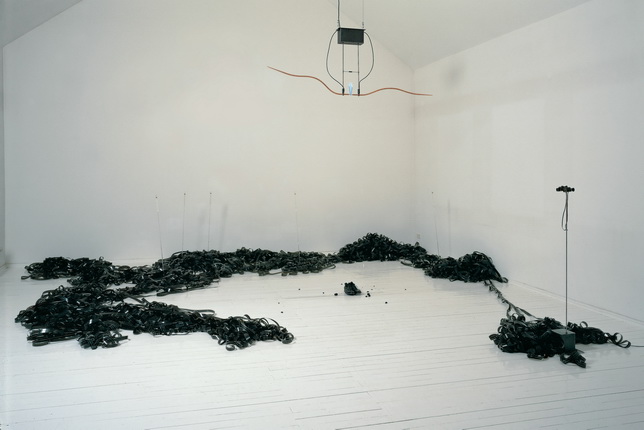
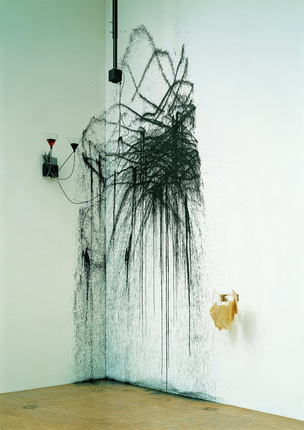
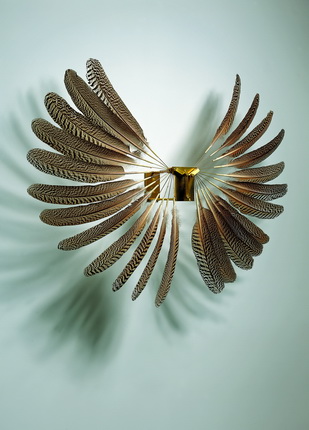
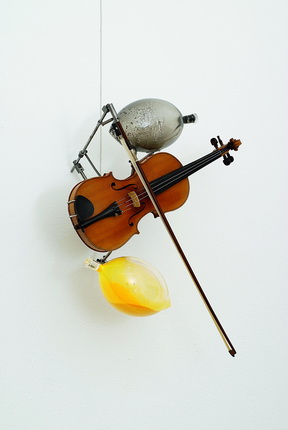
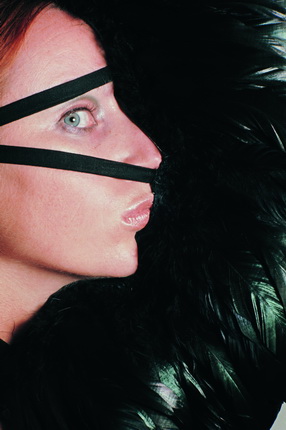

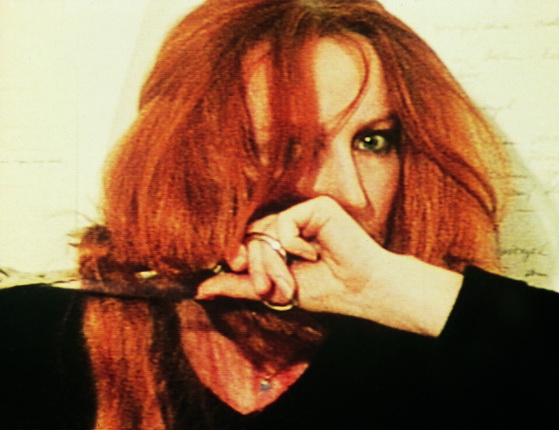
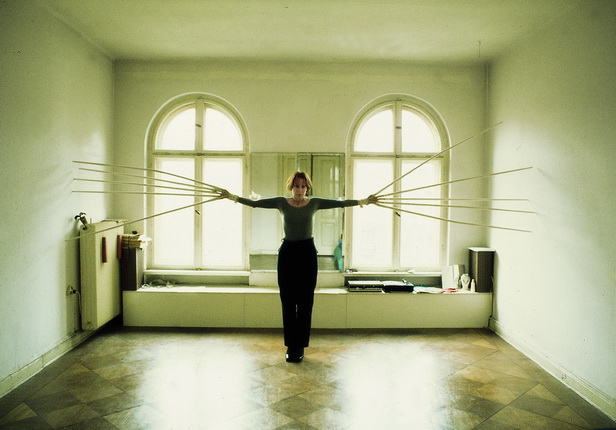
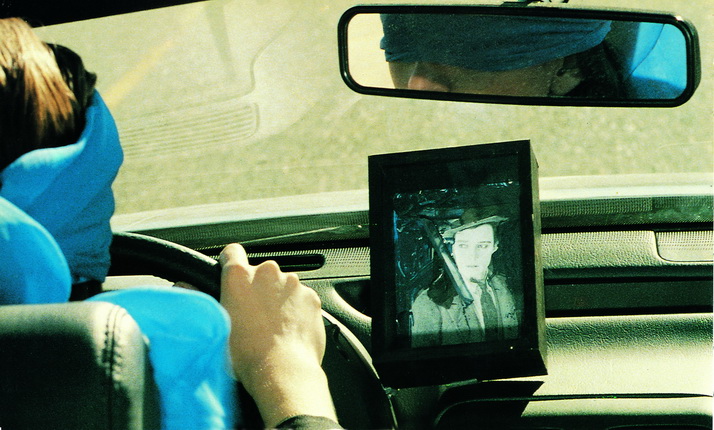

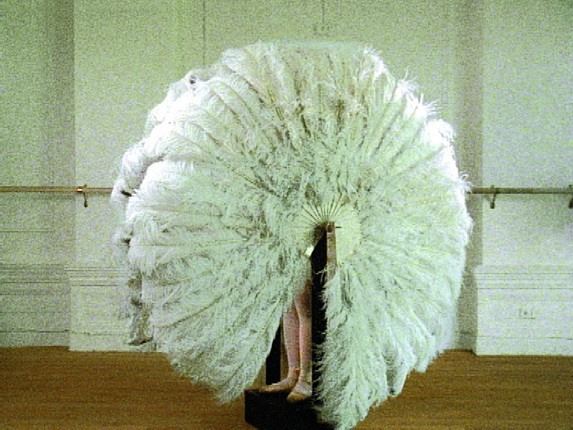
Rebecca Horn. The Raven Tree, Der Rabenbaum. 2009-2011. Private collection. © Rebecca Horn, VG Bild Kunst. Photographer Heinz Hefele. Courtesy of Rebecca Horn
Rebecca Horn. Time goes by. 1990-1991. Credit IFA Stuttgart. © Rebecca Horn, VG Bild Kunst. Photographer Atillio Maranzano. Courtesy of collection IFA Stuttgart
Rebecca Horn. Die Malmaschine, The Paintingmachine. 1991. Private collection. © Rebecca Horn, VG Bild Kunst. Photographer Attilio Maranzano. Courtesy of Rebecca Horn
Rebecca Horn. Großes Federrad, Large Feather Wheel. 1997. Credit IFA Stuttgart. © Rebecca Horn, VG Bild Kunst. Courtesy of collection IFA Stuttgart
Rebecca Horn. Der Sonnenseufzer. 2006. Private collection. © Rebecca Horn, VG Bild Kunst. Photographer Ed Restle. Courtesy of Rebecca Horn
Rebecca Horn. Cock Mask, Hanhnenmaske. 1973. Private collection Rebecca Horn. © Rebecca Horn, VG Bild Kunst. Photographer Christian von Alvensleben, Hamburg. Courtesy of Rebecca Horn
Rebecca Horn. Pencil Mask, Bleistiftmaske. 1972. Private collection Rebecca Horn. © Rebecca Horn, VG Bild Kunst. Photographer Filmstill. Courtesy of Rebecca Horn
Rebecca Horn. Mit zwei Händen gleichzeitig die Haare schneiden. 1975. Private collection Rebecca Horn. © Rebecca Horn, VG Bild Kunst. Filmstill. Courtesy of Rebecca Horn
Rebecca Horn. Mit beiden Händen gleichzeitig die Wände berühren. 1975. Private collection Rebecca Horn. © Rebecca Horn, VG Bild Kunst. Filmstill. Courtesy of Rebecca Horn
Rebecca Horn. Buster's Bedroom. 1990. Private collection Rebecca Horn. © Rebecca Horn, VG Bild Kunst. Filmstill. Courtesy of Rebecca Horn
Rebecca Horn. Buster's Bedroom. 1990. Private collection Rebecca Horn. © Rebecca Horn, VG Bild Kunst. Filmstill. Courtesy of Rebecca Horn
Rebecca Horn. The Feathered Prison Fan. 1978. Private collection Rebecca Horn. © Rebecca Horn, VG Bild Kunst. Filmstill. Courtesy of Rebecca Horn
Moscow, 15.05.2013—14.07.2013
exhibition is over
The Moscow Multimedia Art Museum (MAMM) presents the first personal show of the famous German artist Rebecca Horn in Russia. The display presents about 35 artworks including kinetic objects, documentation of her early performances, films and installations. The latter include: Time Goes by
For the press
Rebeccca Horn (1944) is a recognized classic of contemporary art. She received her first drawing lessons from her governess, and she got her professional education at the Hamburg Higher School of Visual Arts. In 1971, Rebecca Horn had a course of training at the St. Martin College of Arts in London, and spent the next few years in New York
The main theme of Rebecca Horn’s oeuvre is the quest for expanded forms of self-perception, contemplation of the boundaries of the human body, of the complex interrelation between the animate / inanimate, and the way a human being communicates with the surrounding world. These themes were in the focus of post-minimalist art on both sides of the Atlantic, and in this respect the works of Horn are close to the films by Bruce Nauman and Vito Acconci’s performances.
At the age of 20 Rebecca Horn fell ill and spent about a year at a hospital. Her first «body sculptures» originated in that period (between December 1968 and June 1969), and the performances where they were used (Performance 1 and 2) demonstrated how the body overcame its boundaries, how disease and pain are replaced with peace and the feeling of safety. In a sense, Rebecca Horn had to build communication with the external world anew and to discover it for herself again. «In such works as A Balance for the Head, Black Horns, A Continuation of the Head and The White Body Fan, we witness an almost alchemical transformation of the body: amplified with horns, feathers and wings, it turns into the body of a mythological creature.» (Sergio Edelstein)
Her experience of staying in a close state was reflected in the further creations of Horn: it is characteristic that the action of her later full-length films to be shown at the exhibition (Partner for Dancing, Buster’s Bedroom) develop in the isolated space.
It is important to remember that the objects are as much characters in Horn’s oeuvre as people: the animate and inanimate enjoy equal rights in her works, entering into various relations. The mechanisms she designs (Broken Landscape, Solar Admirer) acquire emotions and are animate. In her films, sculptures and installations, closely linked together, Horn offers a new interpretation of the readymade concept, expanding it with animistic elements and demonstrating in this respect greater affinity to spiritualist rites than to conceptual art in this respect. It explains, besides other things, why found objects or objects which acquire a new function play such a significant role in her oeuvre.
The «human» characters of Horn fall into automatic behavior and resemble machines. It is not by accident that Buster Keaton, a legendary comic actor with his deadpan face, has been one of the main reference figures for Horn in the course of many years. The Buster’s Bedroom film and Time Goes by installation are immediately associated with his name. At the same time, Horn’s characters are so vulnerable that they have to hide themselves in the protective shells of feathers, behind masks, in prisons and shelters, don straightjackets. This is the only way for Horn and her characters to become free.
The works of the German artist were ahead of her time, and that is why every show she makes becomes an event to be remembered.
The MAMM show will be accompanied with the publication of a book about Rebecca Horn featuring texts by Doris von Drathen, Martin Mosebach, Karl Henlein and Sergio Edelstein, and the verses of the artist herself, which have been translated into Russian by Aleksey Prokopyev, a prominent translator of poetry and the winner of the Andrey Bely Award (2010).
Works of Rebecca Horn are in the collections of Solomon R. Guggenheim Museum (New York), MOMA (New York), Museum of Modern Art (New York), Museum of Modern art (Los Angeles), Museum of Modern Art (San Francisco), the Art Gallery of New South Wales (Australia), Castello di Rivoli in Turin, Tate Britain (London), Centre Georges Pompidou (Paris), Center for Art and Media Karlsruhe, Van Abbemuseum (Eindhoven), and many others.
The master class of the artist is on May 15th at 7 p. m. in MAMM (Ostozhenka str., 16).
The entrance is free. Please register at mk@mdf.ru.

